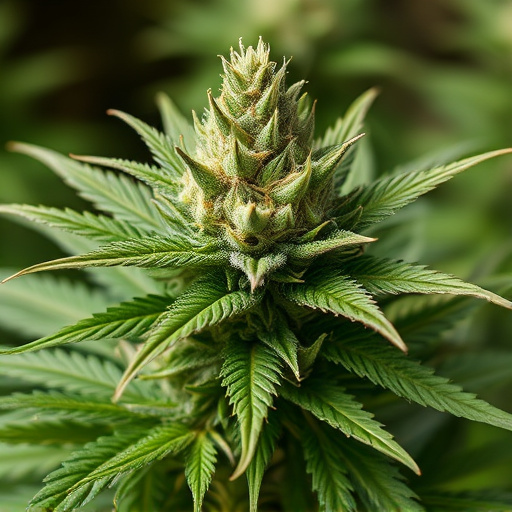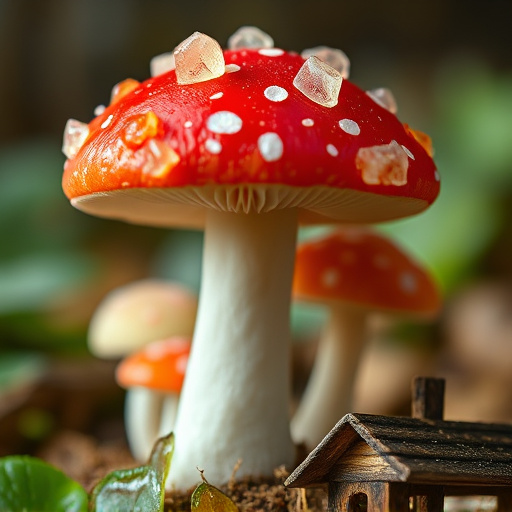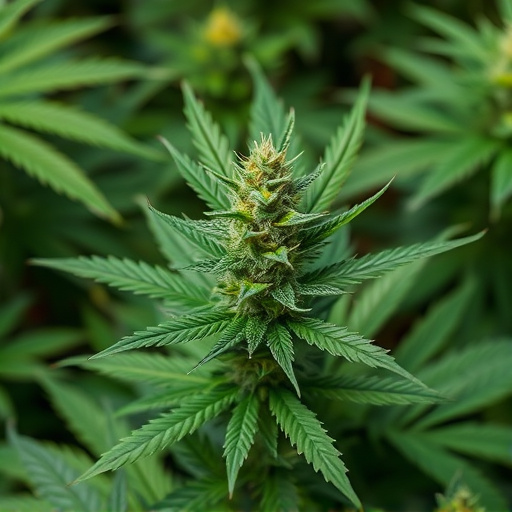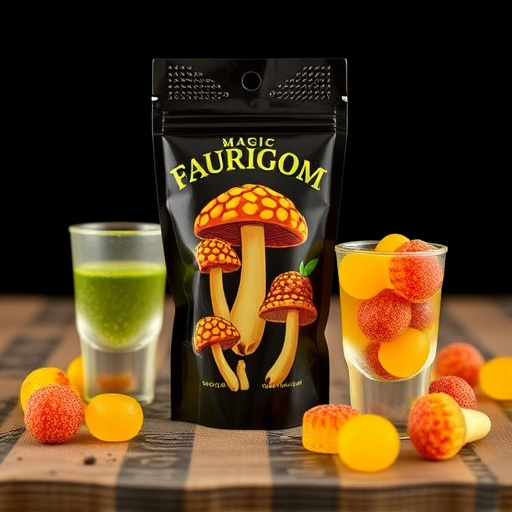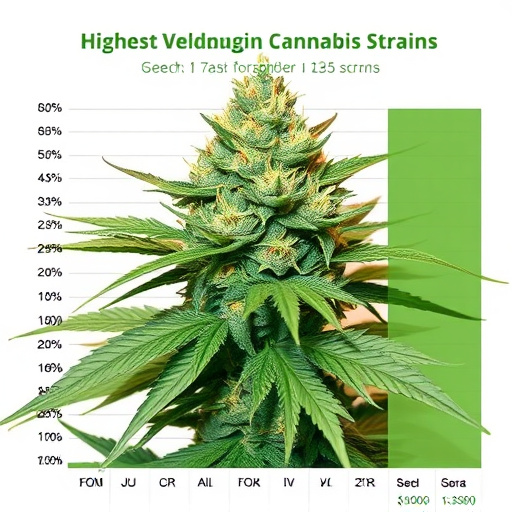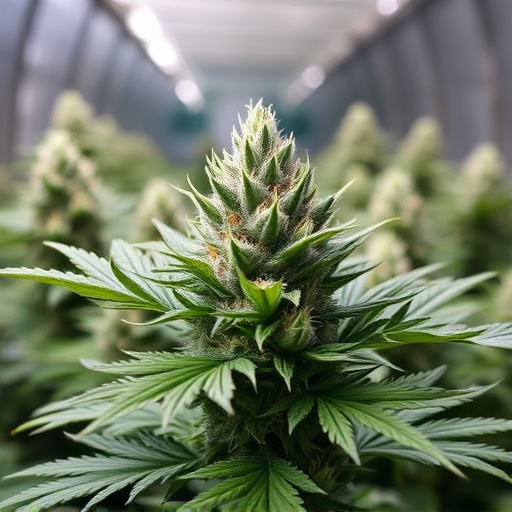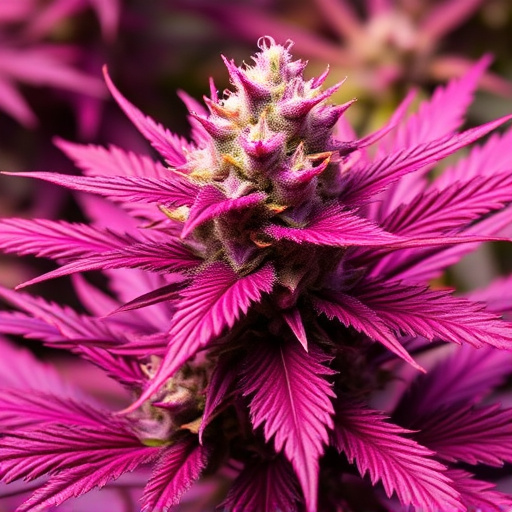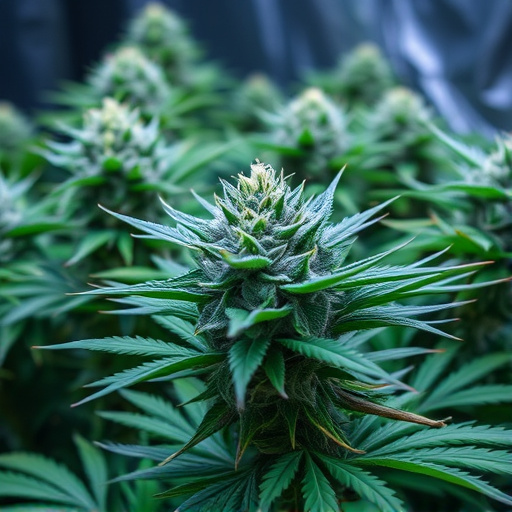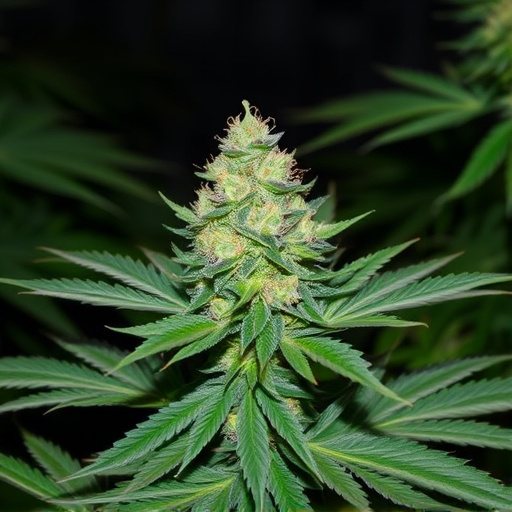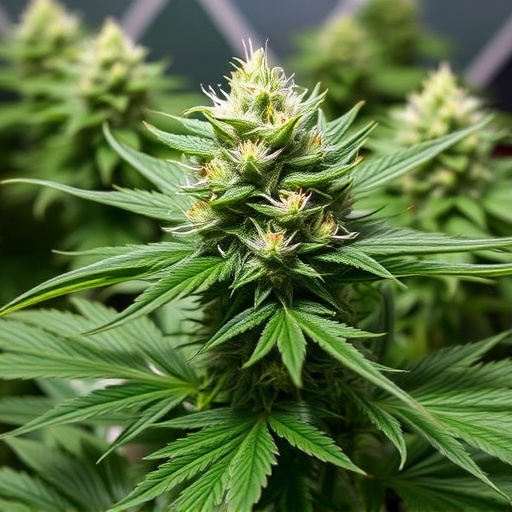The quality and yield of cannabis plants are heavily influenced by their environment, including temperature, humidity, light, and soil conditions. Optimal settings foster robust growth, enhancing cannabinoid production and ensuring top-tier product quality. Adversely, stressful environmental factors can harm plant health and reduce yields. Therefore, cultivators should meticulously control variables like light intensity, spectrum, CO2 levels, and temperature (65-75°F/18-24°C) to maximize the potential of highest yielding cannabis strains.
“Unraveling the intricate relationship between cannabis growth environments and quality is paramount in the industry. This article explores how specific environmental factors significantly impact the yield and overall excellence of the highest yielding cannabis strains. By delving into key elements like temperature, humidity, light duration, and soil composition, we’ll uncover optimization strategies for cultivators aiming to produce premium cannabis. Understanding these connections enables professionals to create ideal conditions, ensuring top-tier products.”
- Understanding the Connection Between Environment and Cannabis Quality
- Key Environmental Factors Influencing Growth and Yield of Highest Yielding Cannabis Strains
- Optimizing Conditions for Premium Cannabis Production
Understanding the Connection Between Environment and Cannabis Quality
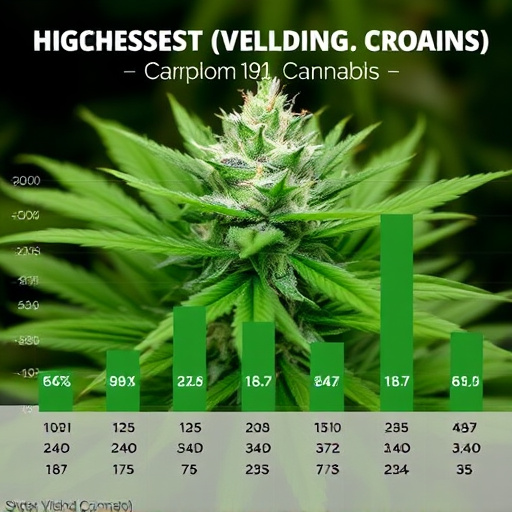
Cannabis, as a highly sensitive plant, is profoundly influenced by its growing environment, which plays a pivotal role in determining the final quality of the product. The intricate relationship between the two is a fascinating subject for cannabis cultivators and enthusiasts alike. By understanding this connection, farmers can optimize their techniques to cultivate the highest yielding cannabis strains with exceptional potency and desirable characteristics.
Environmental factors such as temperature, humidity, light intensity, and soil composition all contribute to shaping the plant’s biology and its ability to accumulate beneficial compounds. For instance, optimal growing conditions promote robust plant growth, enhance terpene production, and encourage the development of complex flavonoids, all of which are integral to the cannabis experience. Conversely, adverse environmental conditions can lead to stress responses in the plants, impacting their overall health and the final product’s quality. Therefore, cultivators must meticulously control and monitor these variables to ensure the best possible outcome for their highest yielding cannabis strains.
Key Environmental Factors Influencing Growth and Yield of Highest Yielding Cannabis Strains
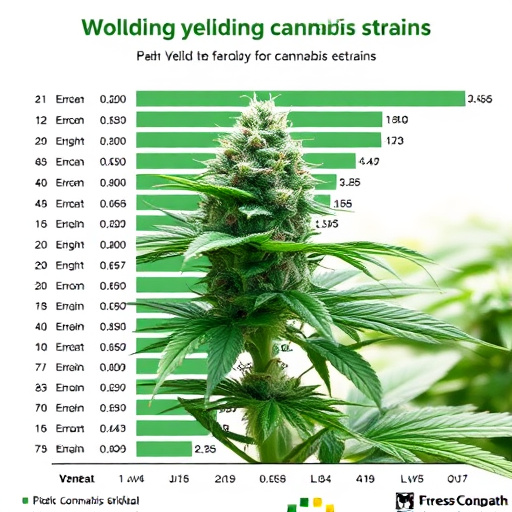
The success of cultivating high-quality cannabis, especially among the highest yielding strains, heavily relies on environmental factors. These elements play a pivotal role in shaping the plant’s growth pattern and final yield. Key variables include light intensity and spectrum, temperature regulation, humidity levels, and carbon dioxide (CO2) concentration. Optimizing these conditions ensures plants receive the ideal environment for robust growth, maximizing their potential as highest yielding cannabis strains.
For instance, light is a critical element; specific wavelengths trigger different physiological responses in cannabis plants. The highest yielding strains often require higher intensities within a balanced spectrum to promote healthy development and maximize cannabinoid production. Temperature and humidity must be carefully controlled, typically within a range of 20-30°C (68-86°F) and 40-60% respectively, to prevent stress that can negatively impact yield. Adequate CO2 levels, often enhanced through controlled environment agriculture, stimulate photosynthesis, further enhancing growth and overall cannabis quality.
Optimizing Conditions for Premium Cannabis Production
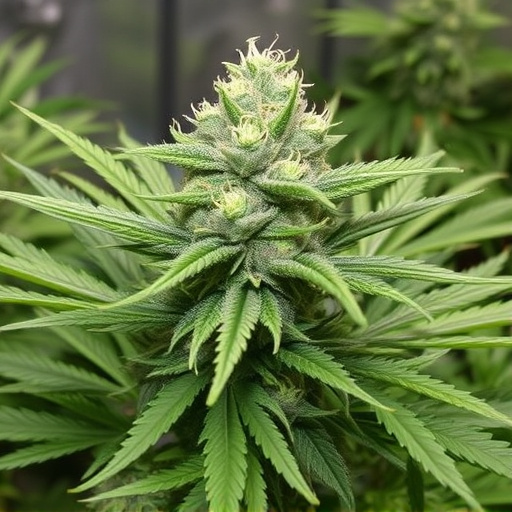
To cultivate the highest yielding cannabis strains, optimal growing conditions must be meticulously maintained. This includes controlling temperature, humidity, and light exposure to ensure plants receive the perfect balance for robust growth. For instance, most cannabis varieties thrive within a narrow range of 65-75°F (18-24°C) in relative humidity levels around 40-60%. Adequate lighting is equally crucial; 18-24 hours of light per day promotes lush foliage and maximizes yield.
Nutrient management plays a significant role as well. Careful monitoring and adjustment of pH levels, along with balanced nutrient applications, directly impact the quality and potency of the final product. Additionally, proper ventilation and air circulation prevent diseases and pests from hindering progress. By optimizing these environmental factors, growers can not only enhance yield but also produce cannabis with superior terpene profiles and cannabinoid concentrations, ensuring a premium product for consumers.
The quality of cannabis is intrinsically linked to its growing environment. By understanding how key environmental factors, such as temperature, humidity, and nutrient availability, influence the growth and yield of highest yielding cannabis strains, cultivators can optimize conditions for premium production. Careful control over these elements ensures not only superior product consistency but also enhances the overall cannabis experience.
